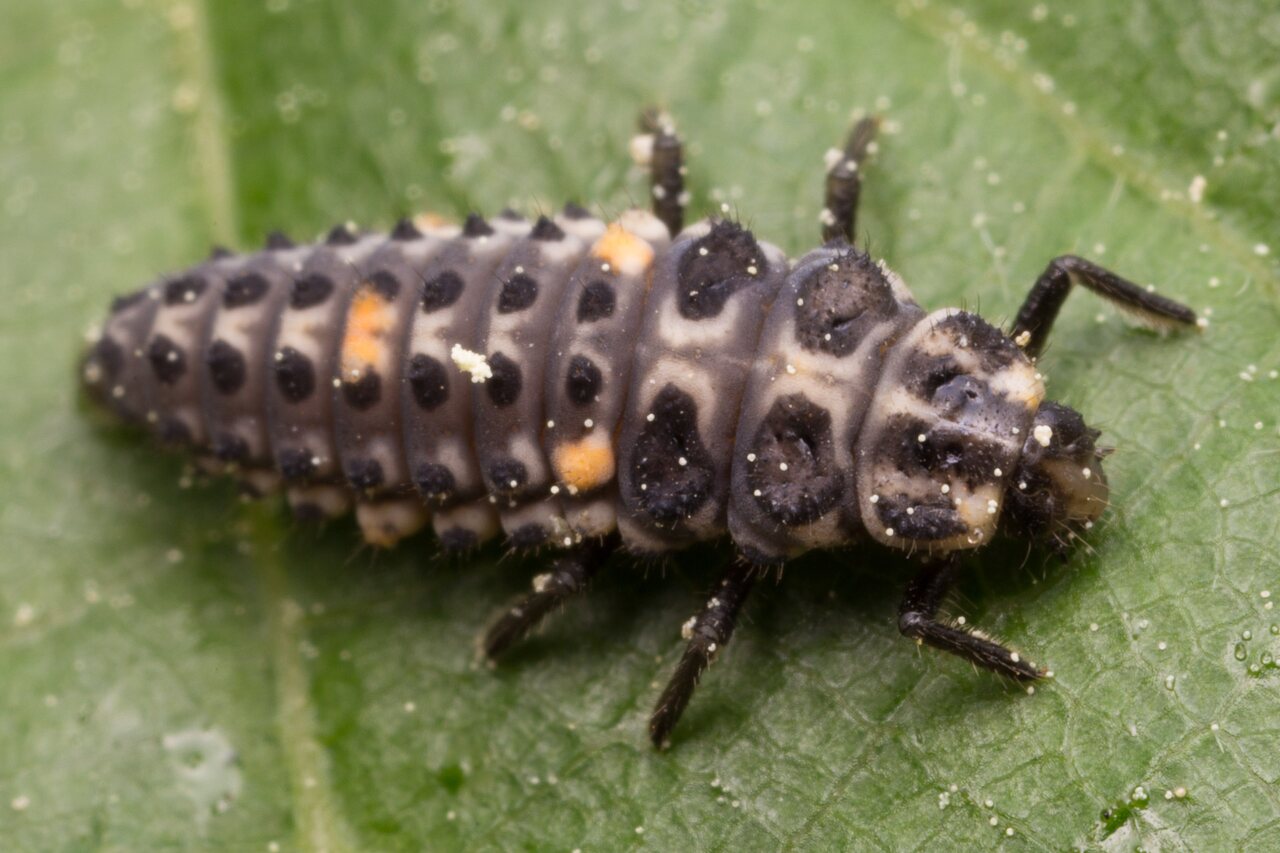
Adalia bipunctata larva · dvitaškė adalija, lerva
- two-spot ladybird, two-spotted lady beetle
- Zweipunkt-Marienkäfer
- dvitaškė adalija
- divpunktu mārīte
- biedronka dwukropka
Mating occurs during May and June and oviposition continues over several weeks during June and July; the cylindrical yellow eggs are laid in batches of 10-40 on the underside of leaves etc. where aphids occur and hatch within a week or so. Under ideal conditions each female may lay up to 500 eggs. Newly hatched larvae consume part of the chorion before moving in search of aphids and their nymphs and eggs and at this stage they may be seen on the backs of adult aphids feeding upon the body fluids as they move. Older larvae are very mobile and will cover whole plants or move between plants in search of prey. There are four instars and it is thought that on average more than 250 aphids are consumed during larval development. Pupation occurs from late June to August, generally under leaves but also on fences or posts etc. and the adults eclose after a week or so thus producing an autumn abundance; they feed through late summer and autumn before overwintering although in good years there may be a partial second generation. Adults are long-lived and there are records of individuals overwintering a second time.
Invasive Harlequin Ladybird is known to predate the Adalia bipunctata and which has increased alongside the decline of that species.
Kūnas 3,5-5 mm. Priešnugarėlė juoda, geltonais šonais arba geltona su M raidės formos juoda dėmė. Antsparniai raudoni, kiekvienas iš jų su 1 juoda dėmele per vidurį. Antsparnių piešinys labai nepastovus, todėl pasitaiko spalvinių ir morfologinių nukrypimų. Paplitusi laukuose, pievose, soduose. Lietuvoje dažna rūšis. Sunaikina daug amarų.
‥
0 comments
Add a comment